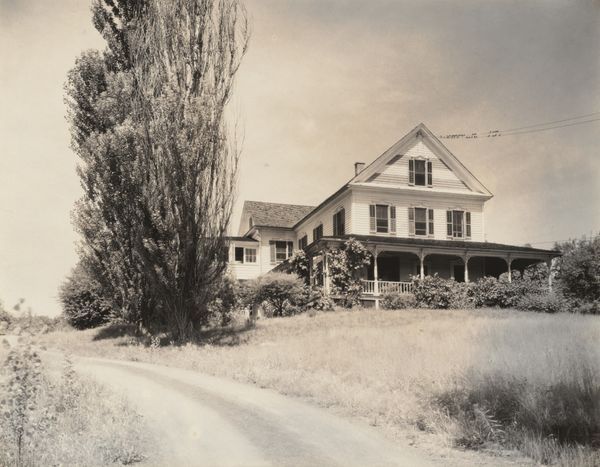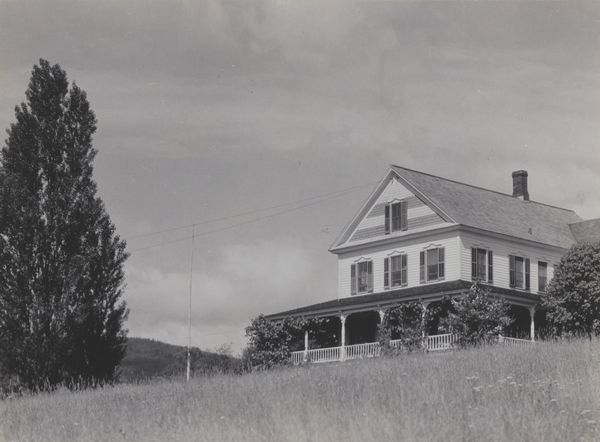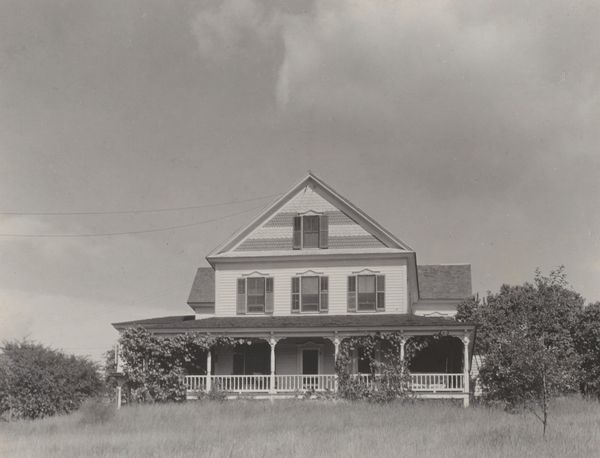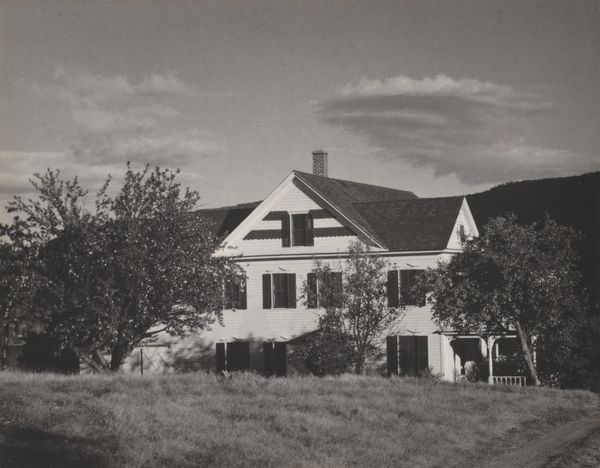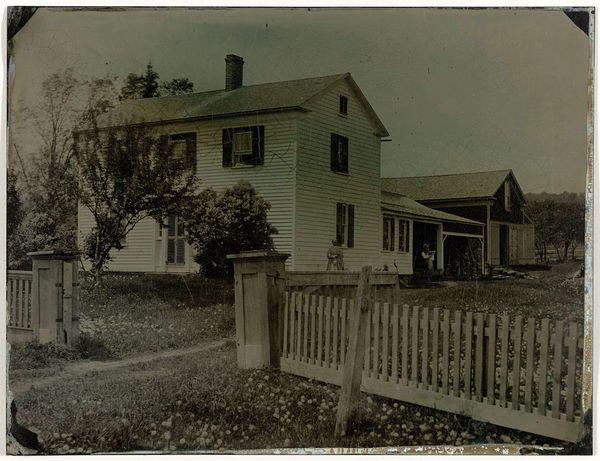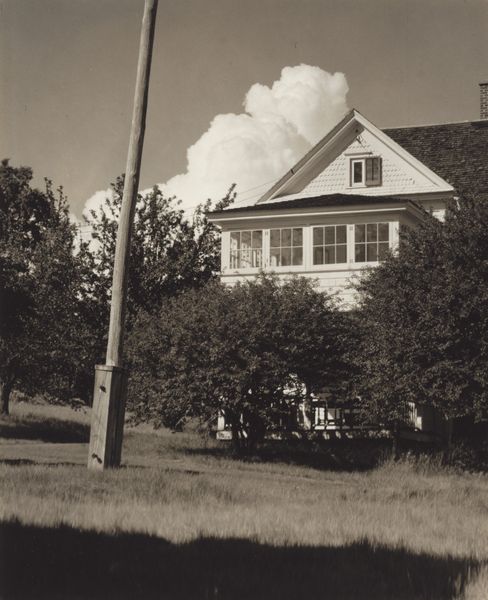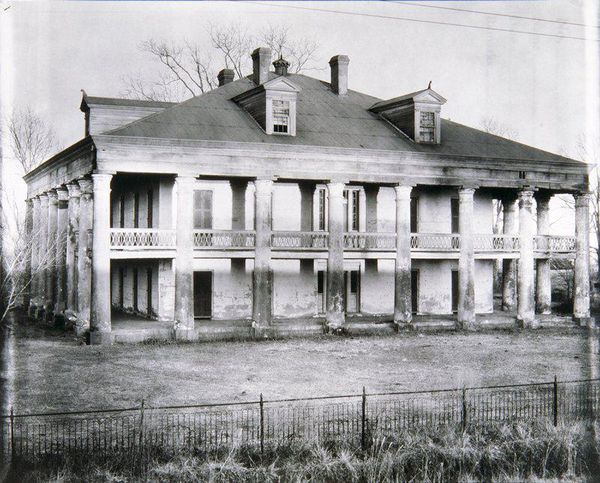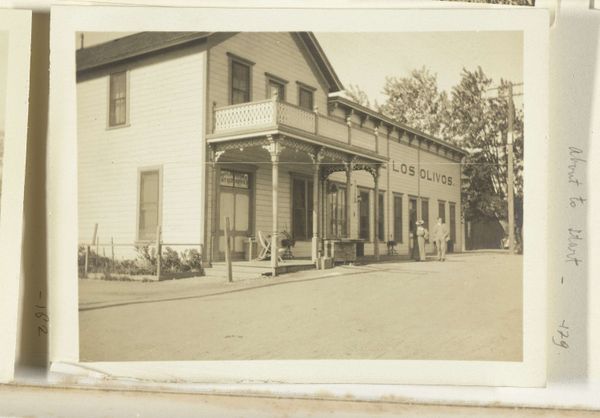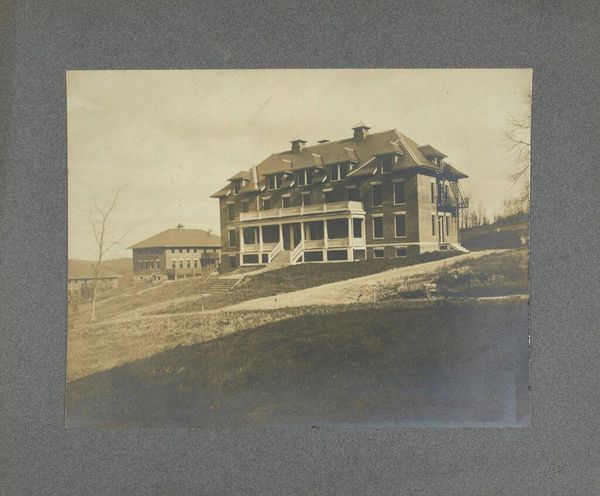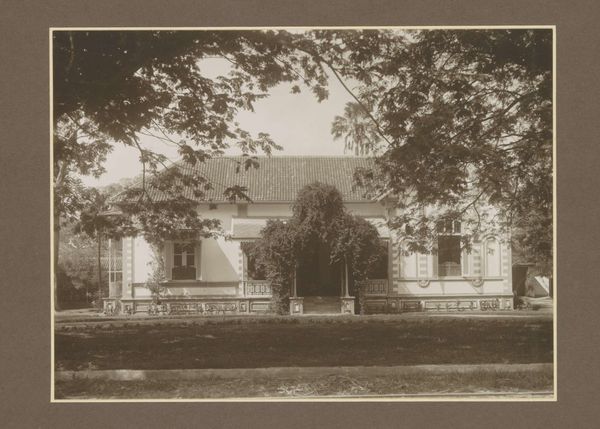
photography, photomontage
#
portrait
#
black and white photography
#
pictorialism
#
landscape
#
photography
#
photomontage
#
black and white
#
monochrome photography
#
monochrome
Dimensions: sheet (trimmed to image): 11.4 × 9.1 cm (4 1/2 × 3 9/16 in.) mount: 34.3 × 27.25 cm (13 1/2 × 10 3/4 in.)
Copyright: National Gallery of Art: CC0 1.0
Curator: Looking at Alfred Stieglitz's photograph, "House on the Hill, Lake George," created sometime between 1922 and 1924, what immediately strikes you? Editor: A certain melancholy, a quietude. The starkness of the black and white amplifies the solitude of the house perched on that little hill, almost guarded by the imposing tree to the side. It feels like a forgotten space. Curator: It's interesting you say that, given Stieglitz’s attachment to Lake George. He considered it a spiritual home, you know. This image, captured using the Pictorialist style he championed, wasn’t just a snapshot but a layered, emotional study. What do you make of the house itself? Editor: Well, the house is so very…white. Ostensibly ordinary but the shadows play a huge part in creating this eerie effect. It sits there, basking—or perhaps wilting—under the open sky. Considering Stieglitz’s personal life at the time – his complex relationship with Georgia O’Keeffe, his grappling with artistic legacy— I wonder if he's projecting a kind of personal isolation onto it? Curator: A possible reading. His photographs from Lake George frequently explore themes of place, belonging, and the search for a pure, unadulterated vision. He used photography to tap into something profound. But I feel this specific framing, from below and with the focus tilted towards the house itself, suggests more about permanence than about loneliness. Don’t you think? Editor: Permanence can be isolating, can't it? I think that framing situates it within its environment, yet the home feels disconnected somehow. The tree almost dwarfs the house! And look, you can see what appears to be overpainting? This creates a different level of appreciation of how he conceptualizes what 'permanence' means. And to what effect! Curator: Ah, so it really draws you in, eh? It's as if he's immortalizing not just a place, but a specific feeling tied to that place. Thank you! It's easy to see in the photo exactly how powerful "House on the Hill, Lake George" really is. Editor: Likewise, this has shifted my perception significantly, reminding us to reconsider how an artist’s own struggles translate to such different emotional registers on the artistic canvas.
Comments
No comments
Be the first to comment and join the conversation on the ultimate creative platform.
